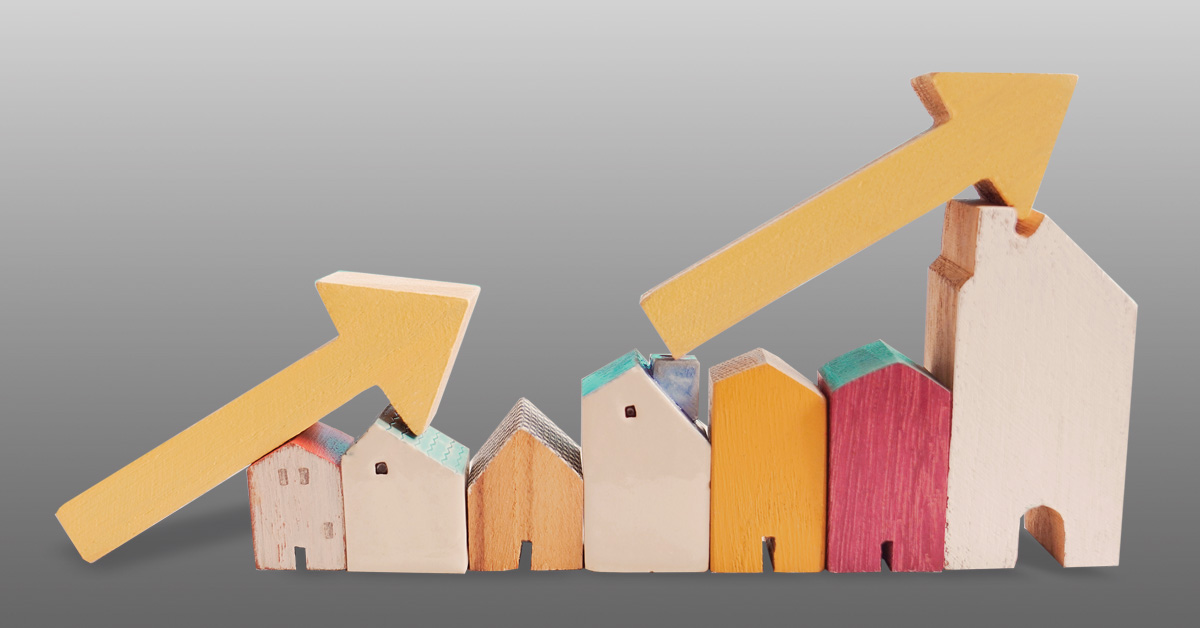Here’s a statistic that isn’t getting talked about enough: New homes as a share of properties listed for sale have shot up since the start of the COVID-19 pandemic. From 2000 until the onset of the pandemic, new homes represented about 11% of the U.S. market at any given time.
Since then, however, new homes have started to make up a much larger share of for-sale inventory, rising to 29% in November 2022 before declining slightly earlier this year. That’s according to First American Financial Corp., which generates the number based on data from the U.S. Census Bureau and the National Association of Realtors.
Part of this trend is the “seller’s strike” that’s going on, with many homeowners locked into such low interest rates that they’re choosing not to sell, says Odeta Kushi, First American’s deputy chief economist. Thus, there are fewer existing homes on the market, but builders are also delivering more single-family homes.
“Existing inventory is so constrained that for a lot of consumers, builders really are the only game in town.”
– Ali Wolf, chief economist, Zonda
Now consider builder sentiment. For three straight months earlier this year, builder confidence in the market rose. This included the largest monthly gain in sentiment since June 2013. Does this mean that the homebuilding industry is, at long last, regaining its footing?
“Yes, with an asterisk,” Kushi says. “What the increase in builder sentiment is telling me is that we might be turning a corner. New housing starts might pick up in the second half of the year, but it really is dependent on the outlook for the economy and (interest) rates, specifically.”
Market observers and industry associations have lamented that the construction industry hasn’t produced enough homes to meet demand ever since the Great Recession. The actual shortfall in homes depends on who is counting but reaches as high as 5.5 million. The National Association of Home Builders (NAHB) pegs the number at closer to 1.5 million.
“Let’s be clear: A million-and-a-half shortfall is still a really significant deficit,” says Robert Dietz, NAHB’s chief economist. “Our expectation is that recovery mode for single-family construction in particular begins later this year.”
Overall, Dietz expects that new home sales will actually be flat this year compared to last year. After that, builders are expected to ramp up production, with 2024 seeing a calendar year increase. “Then 2025 through 2030 appears to be a pretty good runway for homebuilding growth,” Dietz says. “We expect during the back half of this decade to be a period of time where we will see a significant reduction in that structural housing deficit.”
Zonda chief economist Ali Wolf expects that new home sales will finish slightly lower this year than last year. Wolf says that builders experienced a series of fits and starts during the recent past. They started to produce more single-family homes in the first half of 2022 before mortgage rates spiked and demand declined, so they eased the pace of construction.
“They didn’t want to be sitting on homes that they can’t sell, because for them, that felt very reminiscent of the mid-2000s, even though it wasn’t,” Wolf says.
Builders subsequently dropped their prices and offered incentives, causing demand to pick up. Earlier this year, however, the regional bank failures threw a wrench into the works and tightened the credit conditions needed for development.
To be sure, builders still face a number of headwinds. Lack of labor will be a perennial issue due to a series of retirements forecast over the next decade. Supply chain issues remain. And while lumber costs have eased, other problems have emerged, including a shortage of electrical transformers needed to power subdivisions and apartment complexes. “It’s sort of like whack-a-mole with the supply chain bottlenecks where one sort of gets better, but then another one pops up,” Kushi says.
There’s been a lot of talk about easing regulations to allow for growth, especially in some states where single-family zoning is being reevaluated. “If you relax the zoning rules, you still need the construction workers and you still need the capital,” Dietz says. “The changes in the zoning rules are certainly good, but we have to continue to work on all those other constraints.”
Builders have some tailwinds in their favor at the moment. In the aftermath of the pandemic, more people are working from home and only commuting to the office one or two days a week, Dietz says.
“That’s a bullish indicator for housing,” Dietz says. “It’s a more challenging signal for commercial real estate, but it has certainly helped lift demand in lower-density areas because people think about the weekly commute rather than the daily commute.”
Demographics are on the side of builders as well. With so many millennials and members of Generation Z entering their prime homebuying years while baby boomers continue to age in place, new construction is needed. And builders can be confident that if they build a home, there will be interest in their product due to the national housing shortage and so few existing homes landing on the market.
“Existing inventory is so incredibly constrained that for a lot of consumers, builders really are the only game in town,” Wolf says. ●






